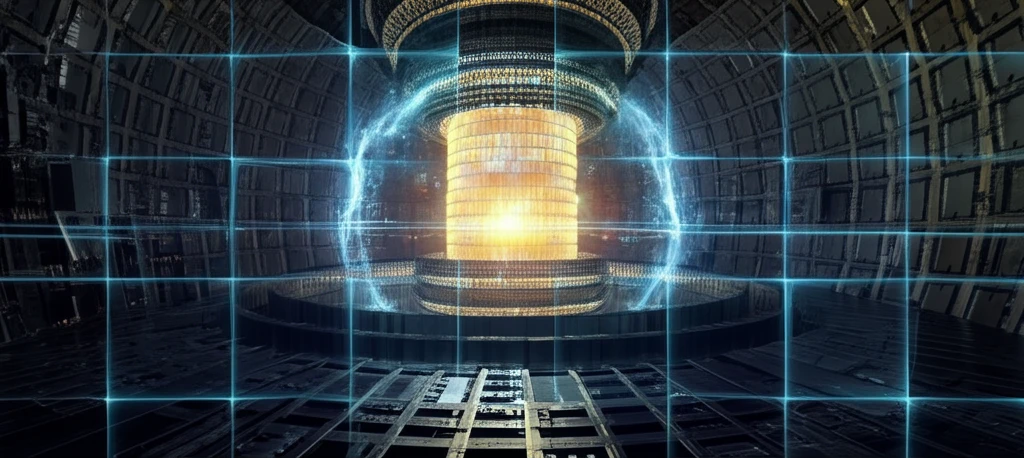
Decoding Nuclear Safety: How Spatial Discretization Impacts Shielding Calculations
"Understanding ARES Transport Code for Enhanced Radiation Shielding"
In the realm of nuclear science and engineering, ensuring the safe and effective management of radiation is paramount. From designing nuclear reactors to implementing radiation shielding in medical imaging, the ability to accurately model and predict the behavior of neutral particles is crucial. Among the various techniques available, the discrete ordinates method (SN) stands out as a primary approach for obtaining numerical solutions to the linear Boltzmann equation, a cornerstone of radiation transport theory.
However, the SN method is not without its complexities. After discretizing the energy and angular variables, a critical step involves discretizing the spatial variables for the multigroup SN equation. This process, known as spatial discretization, significantly impacts the accuracy of numerical simulations and remains an active area of research.
This article delves into the numerical analysis of various spatial discretization schemes implemented in the ARES transport code, a sophisticated tool used for shielding calculations. By examining the error behavior of these schemes, we aim to provide insights into their strengths, weaknesses, and suitability for different applications in nuclear safety.
What is Spatial Discretization and Why Does It Matter?

Spatial discretization involves dividing the physical space of a problem into smaller, discrete elements or cells. In the context of radiation transport, this means representing a reactor, shielding structure, or other environment as a collection of interconnected cells. The transport equation, which describes how particles move and interact within this space, is then solved numerically for each cell.
- Computational Efficiency: How quickly can accurate results be achieved?
- Positivity: Does the scheme avoid non-physical negative fluxes?
- Accuracy (Second-Order Truncation Error): How closely does the numerical solution approximate the true solution?
- Robustness: Does the scheme avoid unphysical oscillations or excessive numerical diffusion?
- Resolution of the Diffusion Limit: Can the scheme accurately model scenarios where particles scatter frequently?
Choosing the Right Scheme for Your Application
The selection of spatial discretization schemes is a critical decision in radiation shielding calculations. By carefully considering the properties of different schemes and the characteristics of the problem at hand, engineers and scientists can optimize their simulations for accuracy, efficiency, and reliability. As computational tools and methodologies continue to evolve, ongoing research in spatial discretization will undoubtedly play a vital role in advancing the safety and performance of nuclear systems.
